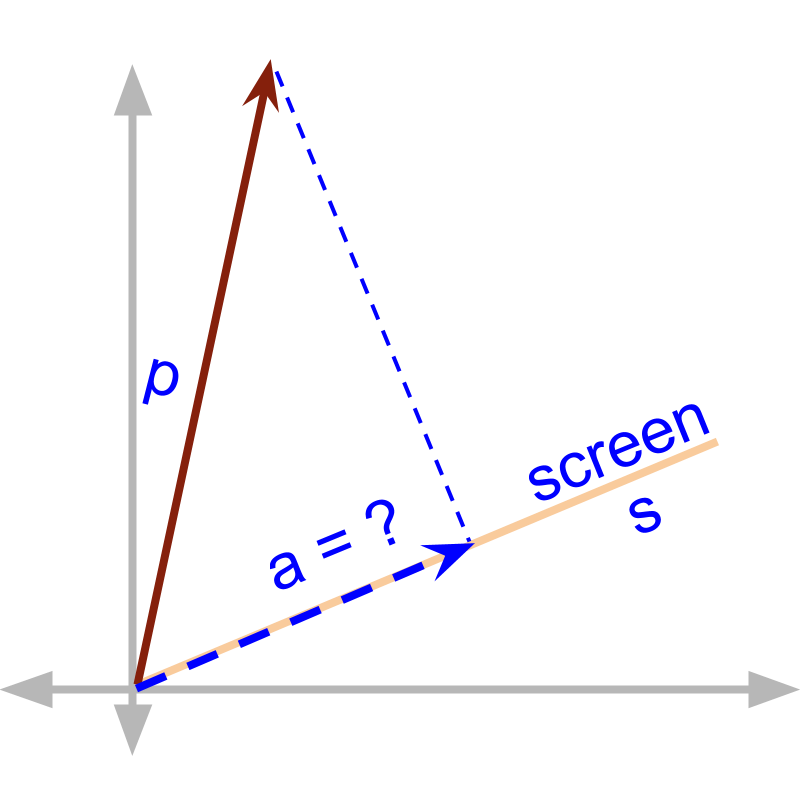
what you'll learn...
Overview
Dot Product with Added Direction
» By definition, dot product is scalar
» Some applications may specify an additional direction in the multiplication of components in parallel. In such cases, the direction is combined.
think different
An object by position vector casts a shadow on a screen. The screen in given by unit vector . The shadow is a vector that spans as a ray with a starting and end point.

and the screen are given. The length of the shadow is which is a scalar
The shadow is a vector along the direction of and the length of the shadow is . Combining thest to the shadow is given as
summary
Projection vector using Dot Product: For a vector and a direction given by unit vector , the projection vector of in direction is .
Vector dot product by definition is a scalar. Depending on the application requirement, a direction can be added to the scalar.
Outline
The outline of material to learn vector-algebra is as follows.
Note: Click here for detailed outline of vector-algebra.
• Introduction to Vectors
→ Introducing Vectors
→ Representation of Vectors
• Basic Properties of Vectors
→ Magnitude of Vectors
→ Types of Vectors
→ Properties of Magnitude
• Vectors & Coordinate Geometry
→ Vectors & Coordinate Geometry
→ Position Vector of a point
→ Directional Cosine
• Role of Direction in Vector Arithmetics
→ Vector Arithmetics
→ Understanding Direction of Vectors
• Vector Addition
→ Vector Additin : First Principles
→ Vector Addition : Component Form
→ Triangular Law
→ Parallelogram Law
• Multiplication of Vector by Scalar
→ Scalar Multiplication
→ Standard Unit Vectors
→ Vector as Sum of Vectors
→ Vector Component Form
• Vector Dot Product
→ Introduction to Vector Multiplication
→ Cause-Effect-Relation
→ Dot Product : First Principles
→ Dot Product : Projection Form
→ Dot Product : Component Form
→ Dot Product With Direction
• Vector Cross Product
→ Vector Multiplication : Cross Product
→ Cross Product : First Principles
→ Cross Product : Area of Parallelogram
→ Cross Product : Component Form
→ Cross Product : Direction Removed